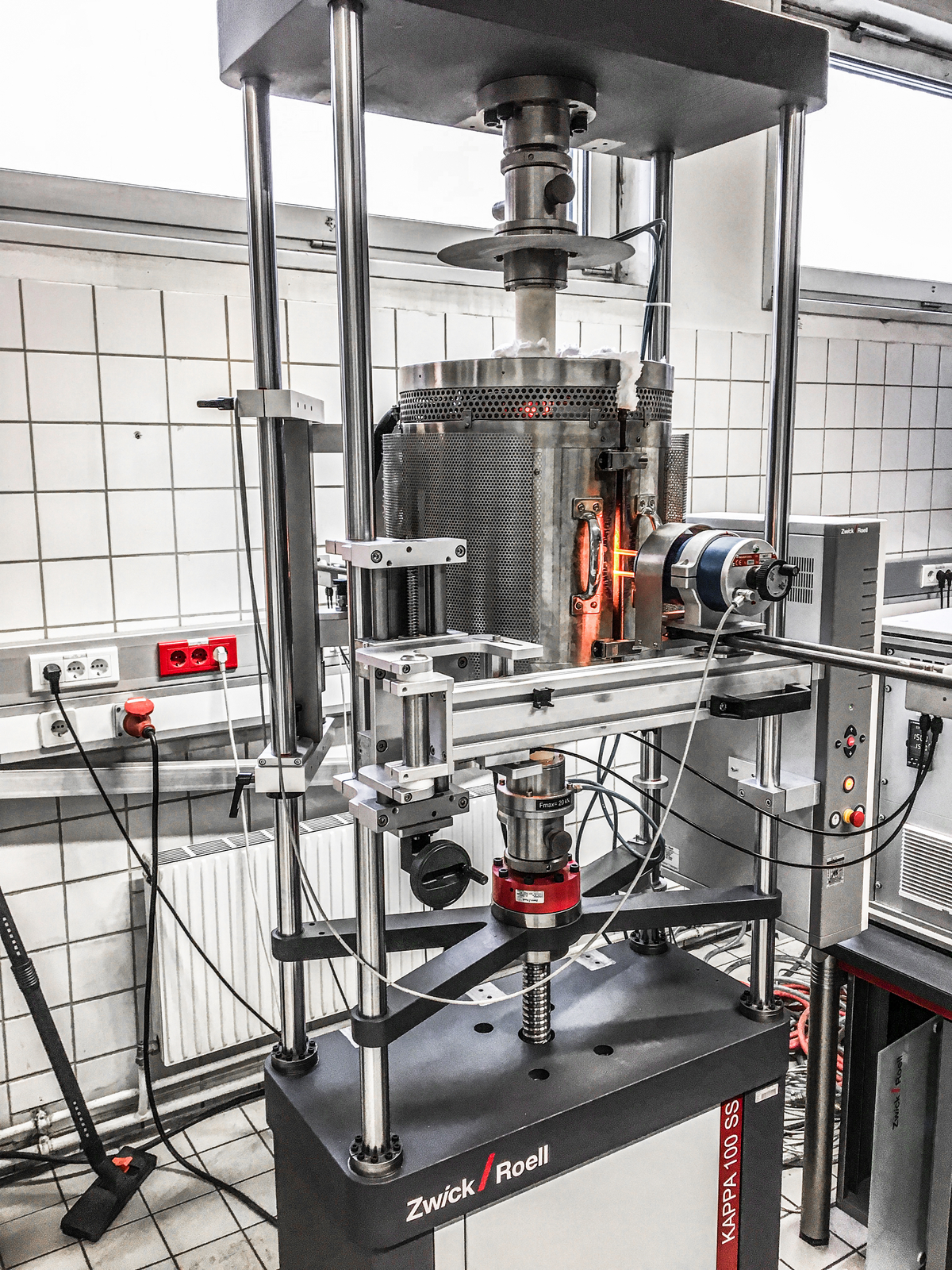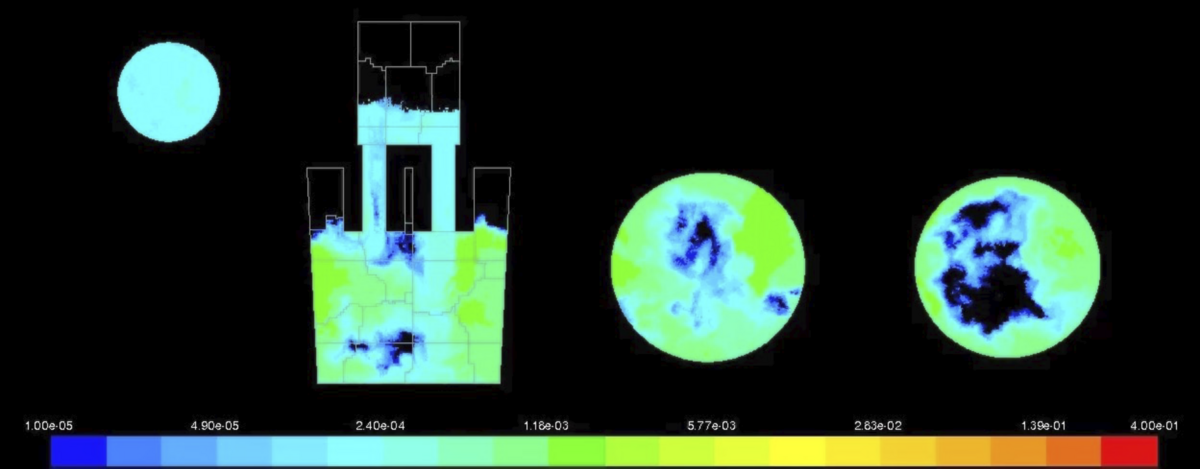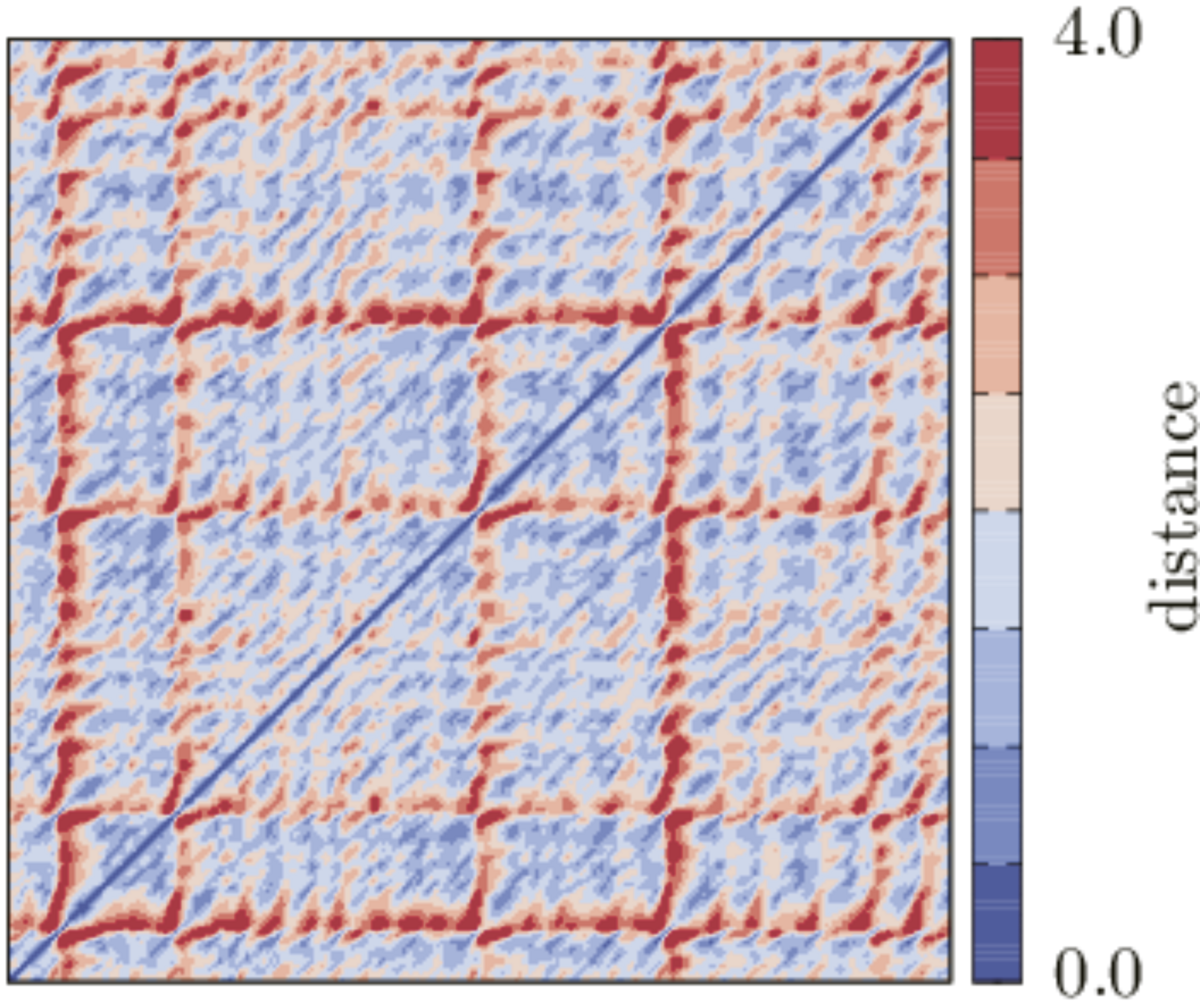Introduction
The acceleration of simulations is a key aspect in the improvement of metallurgical process simulations, which often involve large time spans or geometries, and thus substantial computational costs. The overarching objective of this project is to work on the advancement of simulation methodologies and contribute to a better applicability and practicability of CFD, DEM or FE simulations.
With respect to CFD simulations, the further development of recurrence CFD (rCFD) is planned. The goal is to establish an applicable workflow from state-of-the-art CFD simulations towards real-time capable rCFD simulations, which have been developed in the frame of the previous funding period. Moreover, further methods for new locally accelerated simulation algorithms with emphasis on an automated search for recurrent patterns on a local level will be sought, e.g., via Fourier methods. In the case of FE simulations, the development of a numerical methodology for acceleration of finite element simulations of lining systems based on machine learning will be done, working towards a future realization of digital twin of lining systems.
Objectives and Motivation
- Establishment of a series of multiphase CFD simulations of common metallurgical processes as a validation base for novel rCFD simulations for the purpose of exploring the possibilities and still existing limitations of this method
- Adaptations and further developments of rCFD in the thorough testing process of the simulation results (possibly required calibration of local diffusion and source terms)
- Application of the new transformation workflow to metallurgical processes ranging from argon-oxygen decarburization (AOD) process to tundish flows to submerged entry nozzle (SEN) flows
- Local acceleration of simulation algorithms, employing recurrent patterns on a local, i.e., per-cell or per-area basis, rather than on the entire computational domain
- Investigation of CFD flows in simple geometries as a use case for the early development phase, and comparison and possible combination with rCFD results
- Applications of various advanced machine learning techniques to obtain an optimized prediction model for boundary conditions of next step of finite element modeling
- Development of a unified material constitutive model that allows simultaneous description of irreversible behavior under tension/ shear/ creep
- Investigation of the RH degassing vessel and guidance on lining optimization
Methodology
- Multiphase CFD and rCFD simulations for different operating conditions and geometric configurations
- Validation of rCFD simulations by numerical experiments
- Spectral analyses for dependent simulation variables (pressure, velocity, turbulent variables, etc.) via fast Fourier transform (FFT)
- Use of machine learning to optimize the FFT implementation and setup of a hybrid simulation model for local acceleration of CFD simulations
- Use of finite element (FE) method and machine learning (ML) techniques for the project work
- Development of material constitutive models on refractory lining behaviour and implementation in the commercial FE program ABAQUS
- Application of the unified material constitution model in the simulation of a selected lining concept (stability investigation of the methodology and optimization of the lining)
Results and Application
With regard to the application of recurrence CFD, a better understanding about the applicability of real-time capable rCFD simulation in the realm of metallurgical processes will be gained. Within the course of the project, rCFD simulations should be improved by automated calibration routines for local diffusion and source terms. Beyond that, this project will provide the means to establish real-time simulations of industrial processes, paving the way towards new technologies for process observation and control.
The main goal of the locally accelerated simulation methods is not the real-time process monitoring, but rather establishing a robust and easy-to-use hybrid simulation method, using FFT or other methods. The calculation in certain areas (or of certain variables) which are not of primary importance is sped up by the implementation of the hybrid simulation method, and optimized with a machine learning process, while the conventional CFD method is still active on important areas or variables.
The core technical result of the acceleration of FE simulations is the speed-up and improvement of simulation and prediction of refractory behaviour. Moreover, guidance for lining optimization and improved lining sustainability will be gained, and the results will be a first step towards the preparation of a digital twin for refractory lining behavior and predictive maintenance. Scientific results will provide a unified material constitutive model as well as a methodology combining FE and ML approaches for thermomechanical behavior prediction of linings, with guidelines for their applicability in other simulation methods.

 DE
DE EN
EN![[Translate to English:]](/fileadmin/_processed_/b/5/csm_area3_weiss_f1f233eda7.png)


